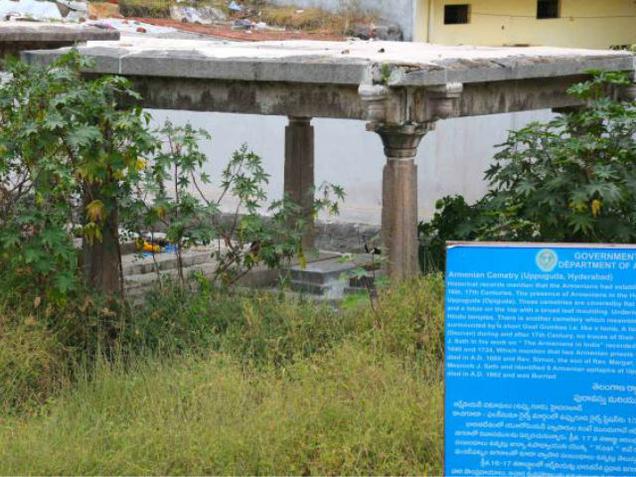
The existence of the cemetery of Armenians was brought to light by Mohammed Ziauddin Ahmed Shakeb, a historian from the city in 1970.
Two of Hyderabad’s most famous Armenians, Albert Abid and Alexander Jacob, are not buried at the Armenian cemetery in Uppuguda. But the cemetery is preparing to enlighten people on the role of the two Armenians in the 16 and 17 century. After lying in a state of neglect for decades, the Armenian cemetery, will be opened to public shortly.
The Department of Archaeology and Museums, which is the custodian of the cemetery, renovated the premises some months ago.
“ A caretaker will be posted at the cemetery to look after its maintenance,” said Sunita M. Bhagwath, Director, Archaeology and Museums Department.
Armenians came to India between 16th and 17th centuries as traders travelling through Persia, Afghanistan and Tibet. “A large number of Armenians settled in Hyderabad during the 17th century. Though there are no written records of their activities, traditions and social conditions , the Armenian epitaphs acknowledge their presence,” M.A. Qayyum, former Deputy Director Archaeology and Museums said.
There are about 20 graves in the cemetery, 19 are of Armenians and one is of a Dutch trader.
The graves of two priests Rev Johannes, who died in 1680, and Rev. Margar, who died in 1724, are also here. A single dome on the premises representing the Qutb Shahi style of architecture and two mandapa-like structures, one square and the other octagonal, are distinct features of the cemetery.
The existence of the cemetery of Armenians was brought to light by Mohammed Ziauddin Ahmed Shakeb, a historian from the city in 1970.
“Dr. Shakeb chanced upon a letter written by British Resident W. Haig in Hyderabad to a government official in 1907 about the Armenian cemetery. Soon, officials were informed about it and the place was identified,” Qayyum explained.
Rs. 25 lakh for renovation
The department spent around Rs. 25 lakh for renovating the place. Wild shrubs were cleared and the height of the compound wall has been increased. The authorities took care to see that the wall was renovated using granite, lime and mortar to keep in tune with the character of the precinct.
The tough task ahead for them is to see that the basalt stones with Armenian engravings on the graves are restored. “We will be seeking the help of experts for the job,” Ms. Bhagwath said. Historians suggest that the government seek the Armenian authorities’ help in establishing the identity of all those who are buried here.
source: http://www.thehindu.com / The Hindu / Home> News> Cities> Hyderabad / by Asif Yar Khan / Hyderabad – October 31st, 2015